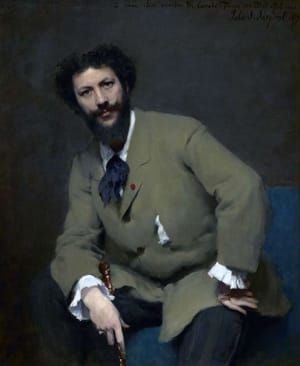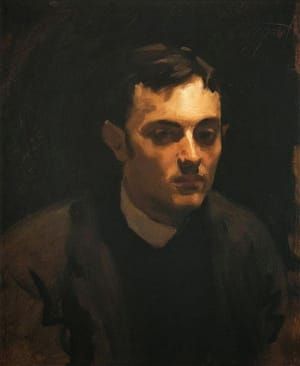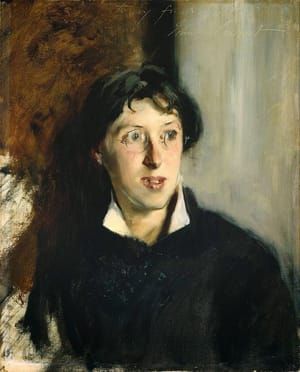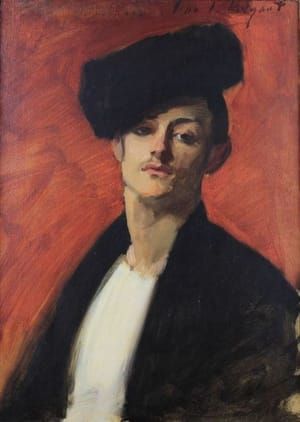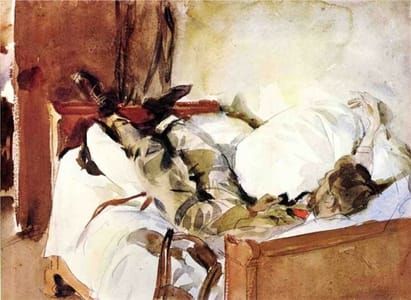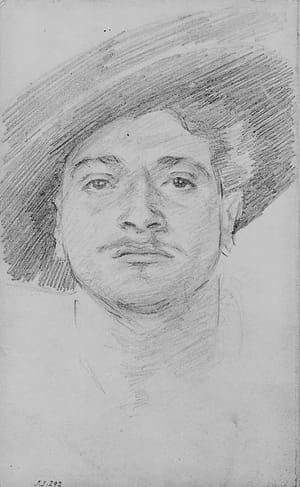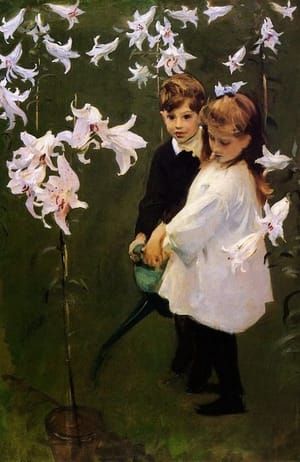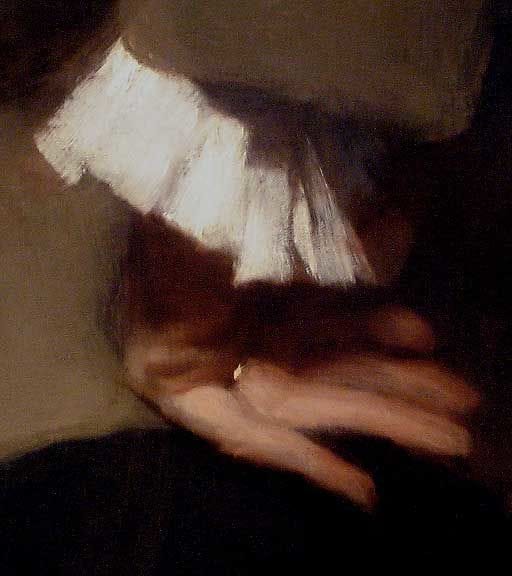

Carolus-Duran, 1879
John Singer Sargent
As a teenager, Sargent was enrolled in the Accademia di Belle Arti in Florence and later, when he was 18, the family moved to Paris where Sargent could study at the atelier of the painter Charles Auguste Émile Carolus-Duran, of whom he would make one of his best early portraits. Carolus-Duran, an admirer of Velázquez, taught his students not to prepare a painting by making sketches or drawings, but instead insisted that, in the words of one of his pupils, “the main planes of the face must be laid directly on the unprepared canvas with a broad brush”. The emphasis was on capturing the flow of light on surface, seeking inflections and what was shimmering and in flux rather than solid mass or carefully delineated tonal structure.
Sargent’s talent was recognized by his fellow students, one of whom wrote in October 1874: “I met this last week a young Mr Sargent about 18 years old and one of the most talented fellows I have ever come across; his drawings are like old masters, and his colours are equally fine… Such men wake one up, and as his principles are equal to his talents, I hope to have his friendship.” During his time as a student in Paris, Sargent became immensely industrious, and indeed remained so until his death in 1925. In September 1877, his sister wrote to a friend that her brother “works like a dog from morning till night”. Unlike his fellow students, Sargent dressed respectably; he tended also to be prim and well-mannered.
(http://www.telegraph.co.uk/art/artists/the-secret-life-of-john-singer-sargent/)
Sargent studied with Carolus-Duran, whose influence would be pivotal, from 1874-1878. Carolus-Duran's atelier was progressive, dispensing with the traditional academic approach which required careful drawing and underpainting, in favor of the alla prima method of working directly on the canvas with a loaded brush, derived from Diego Velasquez. It was an approach which relied on the proper placement of tones of paint.
In 1879 Sargent painted a portrait of Carolus-Duran; the virtuoso effort met with public approval, and announced the direction his mature work would take. Its showing at the Paris Salon was both a tribute to his teacher and an advertisement for portrait commissions. Of Sargent's early work, Henry James wrote that the artist offered 'the slightly "uncanny" spectacle of a talent which on the very threshold of its career has nothing more to learn'.
(http://hoocher.com/john_singer_sargent/john_singer_sargent.htm)
Uploaded on Oct 22, 2017 by Suzan Hamer
John Singer Sargent
artistArthur
Wait what?
